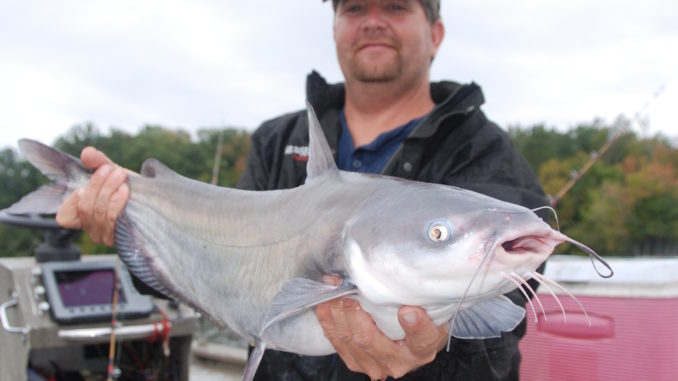
Different sections of river require different tactics as it rolls from North Carolina to Winyah Bay.
Flowing out of North Carolina down to Winyah Bay, the Pee Dee River is a mystery to all but the locals who fish it. Some 30 years ago, flathead catfish stocked in North Carolina impoundments upstream escaped and were flushed down the river. It is estimated that over half of the catfish population in this river is comprised of flatheads, while the other half are jumbo-sized blue catfish.
Either way you go, no one is complaining.
Though anglers tend to concentrate on the fishery first, the natural setting of the river is just as varied. The Great Pee Dee is listed as one of South Carolina’s Wild and Scenic Rivers and changes dramatically from it’s rocky origins above the fall line near Cheraw to coastal marshland before it turns brackish, then salt, and empties into Winyah Bay.
Guide Robbie Burr of Pee Dee Adventures has been fishing the waters of the Pee Dee in both Carolinas his entire life. A native of Lilesville, N.C., he targets catfish in the reservoirs on the North Carolina side of the state line and the flowing waters of the river in South Carolina.
“About the farthest north you can put in the river in South Carolina is at Cheraw at the Laney boat ramp,” said Burr. “Right above the landing, you have about a 10-mile stretch up to the (state), and you have some pools up through there where we catch flatheads and some big blues. It’s pretty tricky because of all the rocks, but you can fish the dropoffs and the steep banks that provide hiding spots for the catfish.”
Burr suggests that anglers who intend to fish these rocky areas leave propellers at home and use a jet-drive motor if one is available. In times of high water, a prop-driven motor will do the job on the rest of the river; however, in times of low water, anglers may find themselves boxed in by numerous sandbars anywhere along above the I-95 corridor near Florence. Shallow- draft boats or even paddle craft tend to be the most-effective watercraft.
Downstream from Cheraw until the river reaches the area of the US 378 Bridge near Johnsonville, the Pee Dee is devoid of rocks, and the terrain remains constant while growing in width.
“Below Cheraw, the river gets wider, and the rocks pretty much stop” Burr said. “You’re not going to be as concerned about losing a prop or a lower unit on rock. The bottom is sandy, and you have a lot more log piles and blowdowns along the bank. Those are the places where you want to set up to catfish, right up in the log piles, right along the banks.”
Unlike targeting catfish in a reservoir, where current may be generated by a far-off dam and structure is something you have to look hard for using electronics, the Pee Dee moves at a fairly decent pace. The name of the game is fishing behind structure that will break the current, providing catfish a place to ambush food.
“Anchor the nose of the boat upstream from the hole where you’ll be fishing,” said Burr. “Deep holes are good, but keep in mind, most of the structure will be along the bank. Set up where you can cast rods both deep and shallow. Because of the current, about four rods straight back, two long and two short, is what you’ll use. I use a 4-ounce lead on a standard Carolina rig with a short leader and then a 8/0 Gamakatsu circle hook. The tackle needs to be heavy, 50- to 100-pound test, preferably because you’re going to be throwing right up in that thick stuff.”
The Great Pee Dee even provides the best bait for anglers looking to fish its waters. Burr uses fresh cut bait for targeting blues and fresh live bait for targeting flatheads. Which bait he uses depends on what he can get.
“Bream work very well. Gizzard shad’s always good and mullet works good, too,” he said. “I cast net all of my own bait before I start fishing. For June, you have your pick. Gizzards are always around year-round; so are bream, but you have to catch them by hand on rod and reel because they are on the gamefish list. Believe it or not, we get mullet all the way up here from the coast. That run starts about the first of May, and they stay here till the fall.”
When asked to distinguish between targeting the river’s big population of flatheads and the remaining blue cats, Burr said there is a difference in baits and locations, depending on whether you are day-time fishing or night-time fishing.
“I prefer to fish for flatheads in the river at night, simply because they get up in the washed-out banks real deep during the day, so deep you can’t get a bait to them until night-time when they come out searching for food,” he said. “But the best place to catch flatheads and probably the bigger blues during the daytime is to concentrate on the bends in the river.”
“Most of the logjams and wood tangle accumulates where the river bends, and that outside bank will wash out and be undercut and catch floating logs; whole trees will even wash in there. That’s what I look for during the daytime” he said.
Rick Woodward, the owner of Rick’s Bait & Tackle in Conway, solved a mystery to come up with the best way to tempt catfish that often grow to weights in excess of 40 pounds in the lower, coastal stretch of the Pee Dee.
“When I was a kid, every other fish we caught out of the Pee Dee was an eel about 18 inches long,” he said. “You just don’t see those eels much any more, and I think it’s because of the big flatheads. That gave me an idea for a good catfish bait.”
Woodward, who provides baits for both freshwater and saltwater anglers from his store, began stocking live eels for anglers targeting cobia in the salt. He soon discovered that a piece of cut eel worked better than anything else for Pee Dee flatheads.
“I sell them live from the shop, then put them on ice so they’ll be easier to handle,” he said. “Once you’re on the water, cut them into 2-inch pieces. Eels bleed a lot and put out a lot of oily scent that draws fish to them.”
While the Pee Dee above I-95 may be difficult to navigate, especially during one of the dry summers the area has experienced lately, Woodward concentrates his fishing on any of a number of sharp bends in the river from I-95 downstream to Bucksport. This stretch has several public access areas that will accommodate small to mid-sized boats.
“Look for a curve that has at least a 7- to 17-foot-deep hole in the bend that also has green trees on the outside bend,” he said. “That gives you a place to tie up, and it also provides shelter and deep water for the catfish. I may start out fishing down in the hole, but if I’m not getting bites or as the sun starts to go down, I’ve got that shallow mud bank on the other side I can cast to where the fish will come up to feed.”
DESTINATION INFORMATION
HOW TO GET THERE — A listing of available boating access areas for the scenic portion of the Great Pee Dee (Florence, Marion, Williamsburg, Georgetown and Horry Counties), including directions and descriptions of the areas, can be found at www.dnr.sc.gov/water/envaff/river/scenic/greatpeedee.html. Boating access for the upper reaches of the Great Pee Dee, from Cheraw to Florence County, can be found at www.dnr.sc.gov/mlands/boatramp.
TECHNIQUES/TACKLE — Tactics for catching catfish from the Pee Dee River are consistent, whether you fish near the fall line at Cheraw or into the brackish waters found closer to the coast. Catfish tend to gravitate to areas that provide moving water while also containing structure that will provide the fish shelter from the moving water and a place to ambush bait. Look for logjams or blowdown trees near steep banks or in bends in the river that will catch and hold woody cover. Use tackle in the 50- to 100-pound class, anchor upcurrent and fan-cast up to four rods around the area you’re targeting. Best baits would include bream and gizzard shad inland and mullet or cut eels closer to the coastal region.
GUIDES/FISHING INFO — Robbie Burr, Pee Dee Fishing Adventures, 704-695-2587 or http://www.pdfishingadventures.com/; Rick Woodward, Rick’s Bait & Tackle, Conway, 843-488-2715. See also Guides and Charters in Classifieds.
ACCOMMODATIONS — Cheraw Tourism Department, 843-537-8425,www.cheraw.com; Florence Convention & Visitors Bureau, 800-325-9005, http://www.visitpeedee.com/.
MAPS — Delorme South Carolina Atlas & Gazetteer, 800-561-5105, http://www.delorme.com/; SCDNR, 843-661-4767, www.dnr.sc.gov.

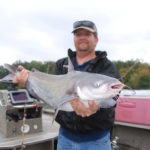
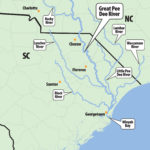
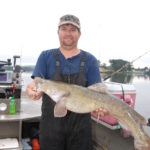
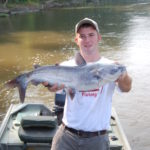
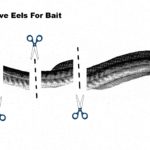


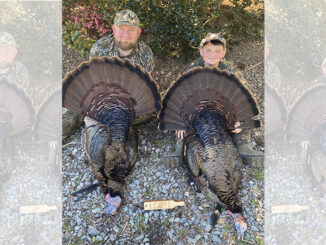

Be the first to comment